I will do my best to keep it closer to $200 to $225 range. But as you see, not enough units to make dent in BOM cost or fabrication/assembly cost.
Updated TPA3255 BOM w/ Annotations for Bal input Stereo BTL Out
BOM with updates for correct current limit programming resistor and also showing where analog input stage programming resistors need to go for Balanced stereo input and stereo BTL output mode.
BOM with updates for correct current limit programming resistor and also showing where analog input stage programming resistors need to go for Balanced stereo input and stereo BTL output mode.
Attachments
Fully assembled TPA3255 Reference Class D amp Interest List
xrk971 24 units USA
Mordikai 2 units USA
Rtep2007 1 unit CZR
Blossom 1 unit NZ
Grahamgraham 1 unit UK
jrosser 1 unit UK
redjr 1 unit USA
454Casull 1 unit CAN
Any idea why H7 and H9 are so (relatively) high?One final test to get high power before I proceed with the production of assembled boards, exposed a few errors on my part. (1) there appeared to be a cold solder joint on one of the legs leading to the bootstrap cap - so I touched and reflowed that with a soldering iron. It may or may not have been a good connection.(2) I saw that my R121 was still at 220k, and so replaced it with a 22k (not sure how that happened because I made a note as if I had changed that). Replacing that fixed the problem and the amp will actually run at higher powers now without hitting the OTW/Error light.
I added a fan cooled CPU to for good measure to run at higher powers. I am able to get 25Wrms into 3.3ohms with the fan off. I used a 100ohm 1W resistor between the fan and the on-board 12vdc supply to quiet the fan down. Connecting the fan with the on-board PSU seems to generate a -100dB ground loop peak at 60Hz for some reason. Very strange as it is only connected to the on board 12v supply and analog ground. Short story is: us a larger passive heatsink or an external PSU for the fan if you must. Or attach it to a metal chassis bottom plate, as designed.
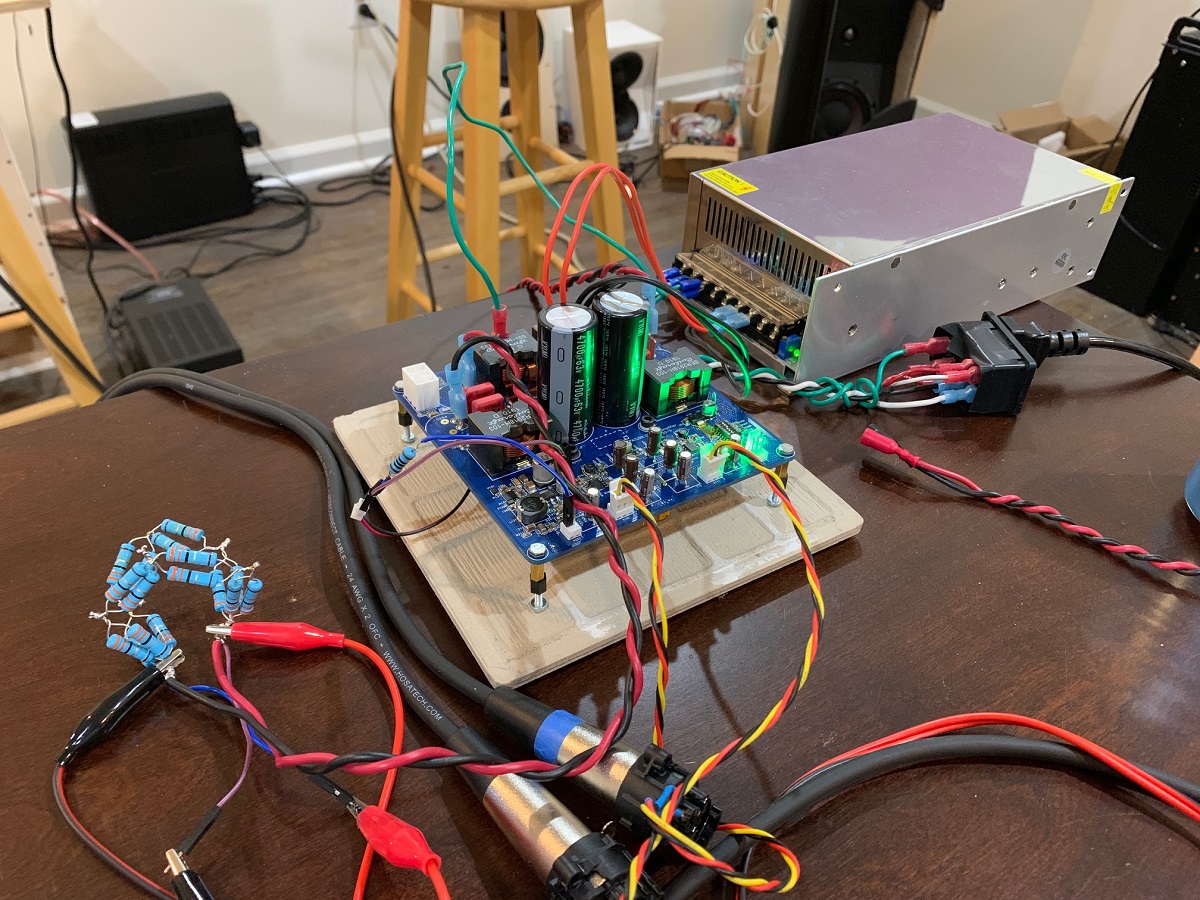

The measurement of the FFT, THD, and SNR at 8.12Vrms into 3.3ohms shows 0.0021% THD and H2 and H3 about the same relative level now. This is down from 0.0026%THD previously measured at the same setting. Slight improvement. SNR is 127dB as measured.
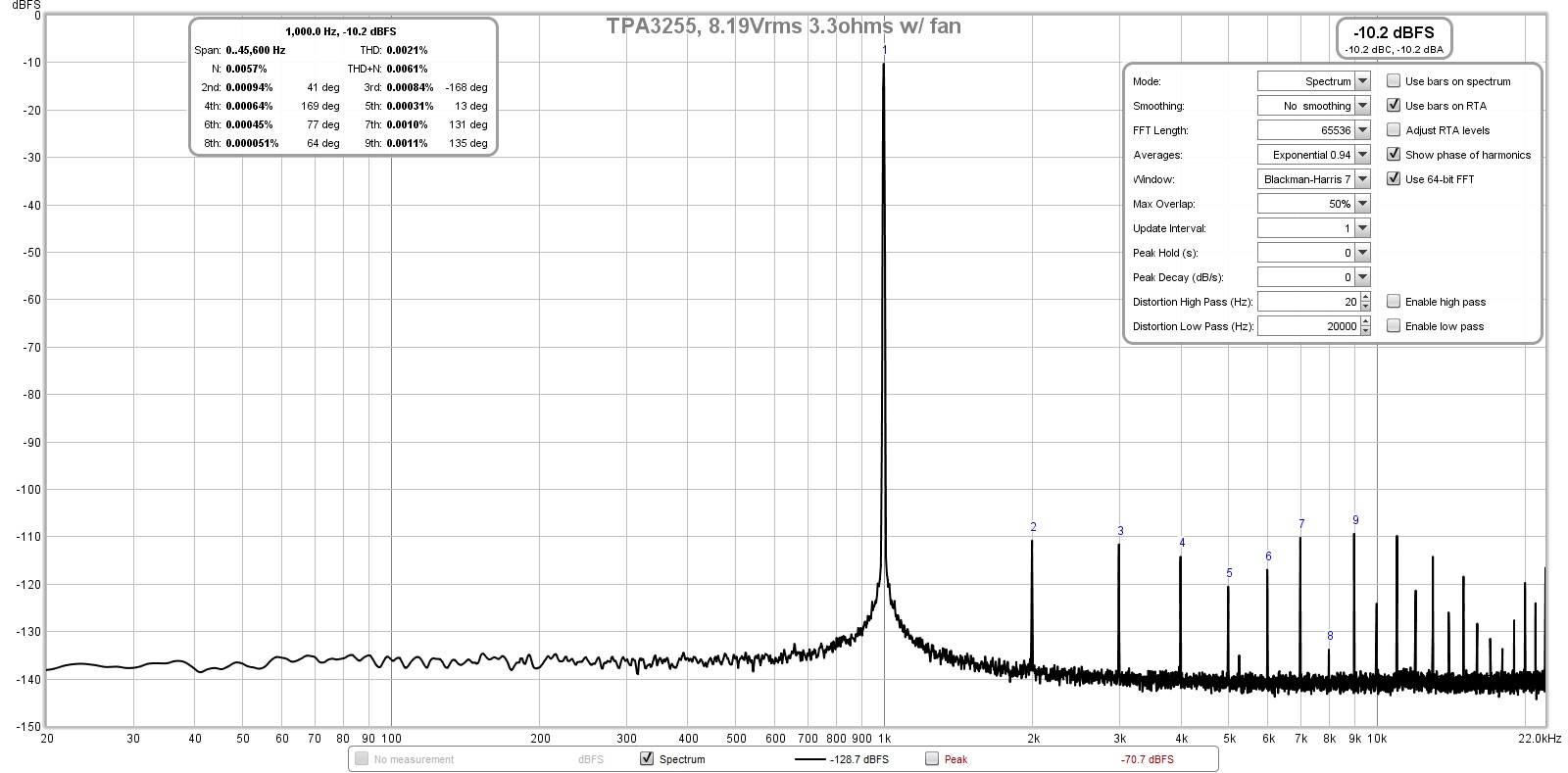
Will have to drag out the big 200w 4ohm resistor to do the big power test.
I think that’s the behavior when driving a relatively low impedance. Here is spectrum that DrMord posted for 4Vrms into 5ohms - you can see H7/9 is relatively high:
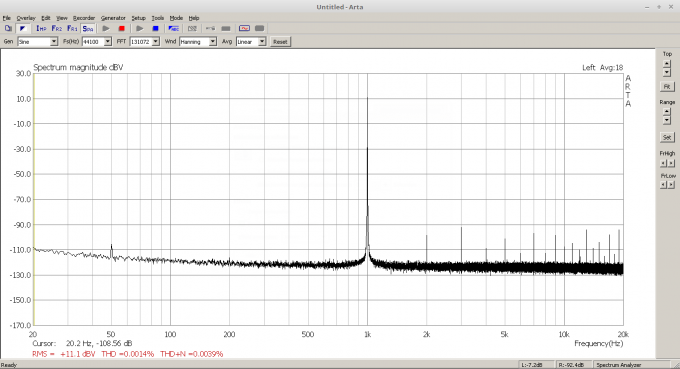
Here is my amp driving a higher impedance load of 6.6ohms:
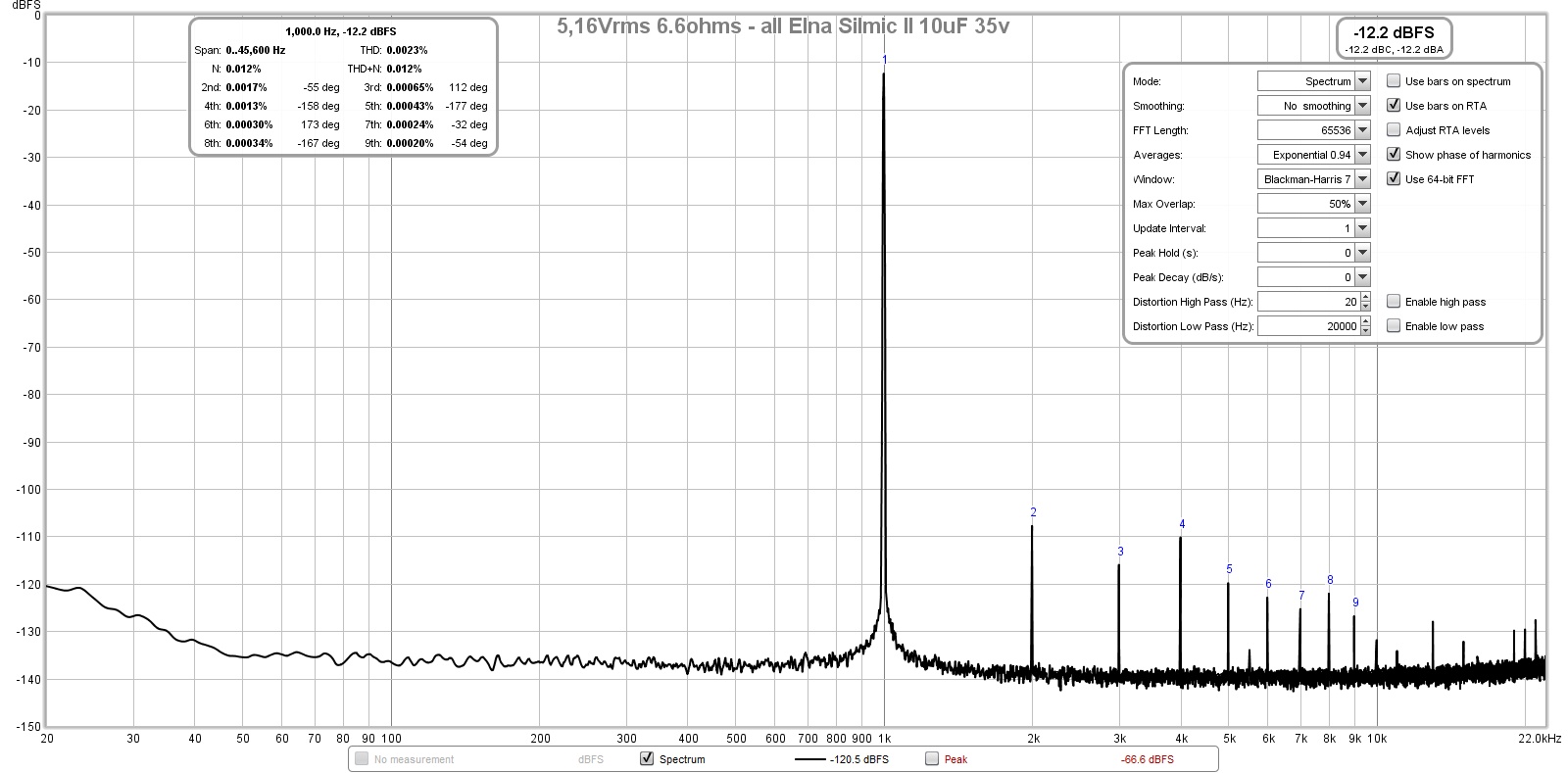
Here is my amp driving a higher impedance load of 6.6ohms:
How do I control the volume on this board, possible to add a volume pot anywhere to attenuate the output?
You could drive this with a single ended preamp like Aksa Lender:
AKSA's Lender Preamp with 40Vpp Ouput GB
You would lose out on some of the common mode noise cancelling advantages of balanced input. But the Aksa Lender is ultra quiet and located close by so no need. Just tie the negative input to ground and drive the positive input with a preamp with about 15dB gain if you want to have volume control and want to be able to hit clipping.
Note that this amp with no PFFB is 22dB gain. With PFFB it is about 18.6dB gain. So unless you have a decent line level preamp capable of 2.8vrms output, it will be hard to get full power into your speakers.
Most decent preamps can make 2.8vrms (8vpp) easily. They will also have volume control.
You could add a regular pot in front of the input. That will achieve attenuation but the input impedance will vary.
The Yarra/Melbourne is also a great preamp. But more complex to build.
Finally, the DCA (desktop Class A) is an awesome preamp and will give your TPA3255 some analog sound processing to make it sound like a SE Class A amp with a superb musicality and harmonic profile. It’s super easy to build (through hole) and very simple. A great first preamp project that doubles as a headphone amp too.
SE Class A Desktop Amp PCB | Etsy
Will drive the TPA2255 to clip easily. Here is measured FFT of DCA:
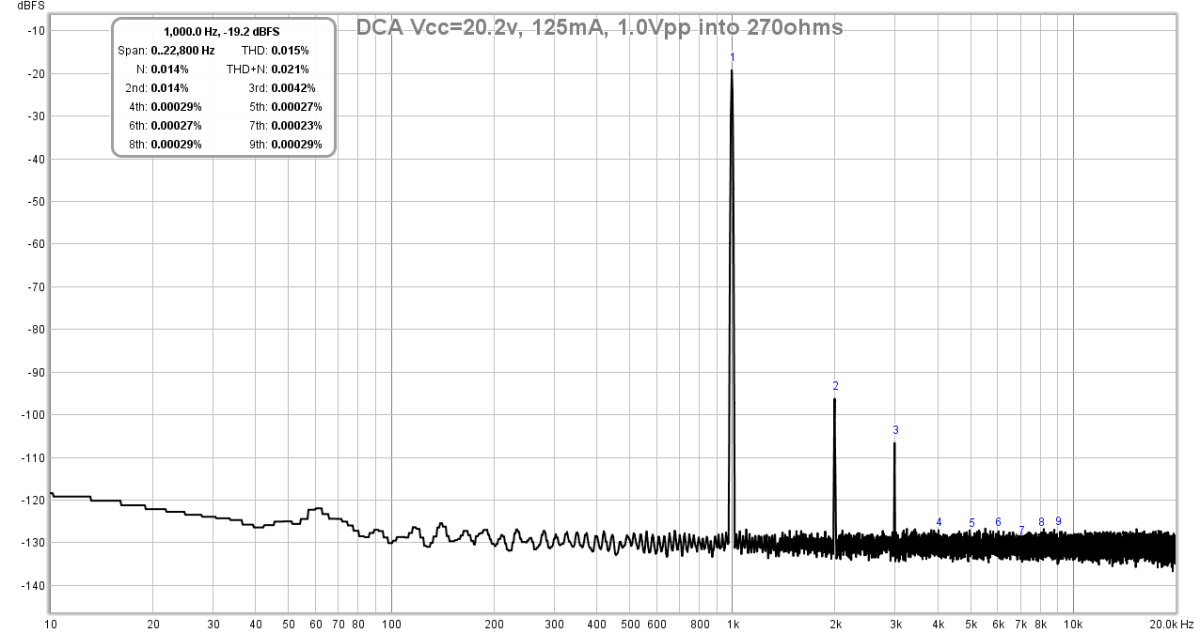
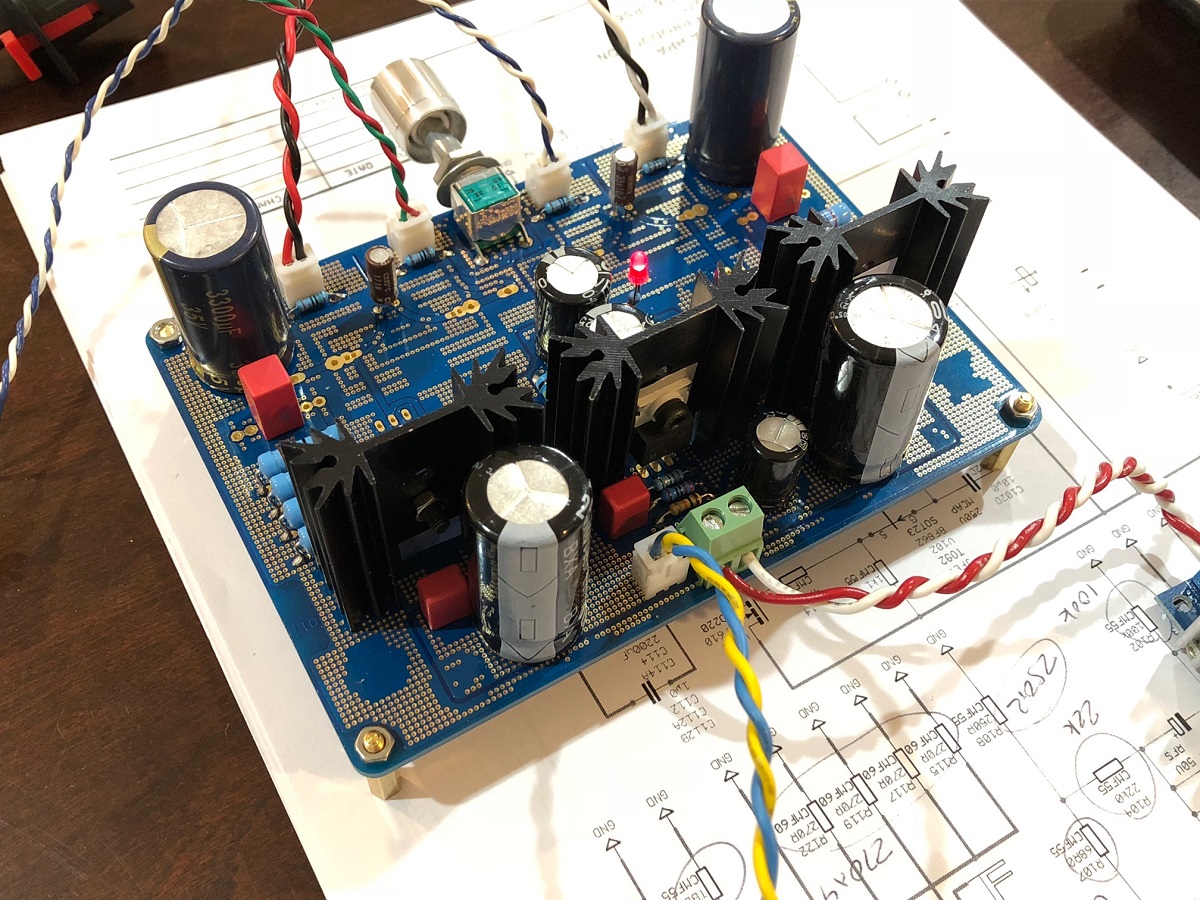
AKSA's Lender Preamp with 40Vpp Ouput GB
You would lose out on some of the common mode noise cancelling advantages of balanced input. But the Aksa Lender is ultra quiet and located close by so no need. Just tie the negative input to ground and drive the positive input with a preamp with about 15dB gain if you want to have volume control and want to be able to hit clipping.
Note that this amp with no PFFB is 22dB gain. With PFFB it is about 18.6dB gain. So unless you have a decent line level preamp capable of 2.8vrms output, it will be hard to get full power into your speakers.
Most decent preamps can make 2.8vrms (8vpp) easily. They will also have volume control.
You could add a regular pot in front of the input. That will achieve attenuation but the input impedance will vary.
The Yarra/Melbourne is also a great preamp. But more complex to build.
Finally, the DCA (desktop Class A) is an awesome preamp and will give your TPA3255 some analog sound processing to make it sound like a SE Class A amp with a superb musicality and harmonic profile. It’s super easy to build (through hole) and very simple. A great first preamp project that doubles as a headphone amp too.
SE Class A Desktop Amp PCB | Etsy
Will drive the TPA2255 to clip easily. Here is measured FFT of DCA:
Last edited:
I got these new power resistors that are very low inductance. I think they are either metal thin or thick film metal oxide? 86nH inductance. I have 300w 10ohm variety and two in parallel gives 600w 5ohms.
https://www.ebg-resistors.com/filea...oduktdownloads/01_EBG_Series_UXP-350_2019.pdf
https://www.ebg-resistors.com/filea...oduktdownloads/01_EBG_Series_UXP-350_2019.pdf
Hi Dean,
The pre-built units will come as stereo BTL, to change to a mono PBTL mode requires you to change a few (SMT) jumpers on the bottom yourself. At the moment, not enough interest in PBTL to warrant a fab line production for it. Can I put you down as 3 stereo BTLs and you can change two of them yourself to PBTL monoblock?
35 units
The pre-built units will come as stereo BTL, to change to a mono PBTL mode requires you to change a few (SMT) jumpers on the bottom yourself. At the moment, not enough interest in PBTL to warrant a fab line production for it. Can I put you down as 3 stereo BTLs and you can change two of them yourself to PBTL monoblock?
xrk971 24 units USA
Mordikai 2 units USA
Rtep2007 1 unit CZR
Blossom 1 unit NZ
Grahamgraham 1 unit UK
jrosser 1 unit UK
redjr 1 unit USA
454Casull 1 unit CAN
Hallcon83 3 units USA
35 units
Hi XRK , still thinking about it, don't count me out yet - still counting my pennies, LOL, -- Have you done much subjective comparisons with the other TPA's - do you hear much differences, or do you feel like it's mostly implementation aspects that are important with the new units?
There are big differences between the Eval-clone TPA3255 boards from China, vs the $75 3E TPA boards from China, and my board in terms of subjective sound quality and also measured performance. I think it comes down to layout and quality of components. I am using what I believe is one of the best layouts made by someone with 30 years of experience in aerospace electronics industry and use of some of the best possible components like the Coilcraft inductors, and all name brand metal thin film resistors (vs no name metal oxide thick film), quality capacitors designed for audio vs no name cheap capacitors. The aim of the amps is also different: in one case is to make it as cheaply as possible, yet it still works vs let's not concern ourselves with parts cost but make it sound as good as possible. I think the 3E amp is a good compromise, and perhaps if you upgraded a few parts, it might acheive higher performance. I think if cost is important to you, don't go with my amp - I will be very direct about that - it ain't gonna save you money to DIY a better amp than what the Chinese designers can do. Alas, the 3E still doesn't have PFFB though - which is worth a lot.
Last edited:
@XRK971 - I noticed when you tested the 3E Audio TPA3255 board you ran power to both sides of the board, is this recommended when using the board normally or is this just for testing?
Ok thanks, in post #106 it looks like there’s power running to both sides. But I can’t see the other side so wasn’t sure.
It’s a parallel connection on the 3E board, one side would work but if you want the most current capability maybe both. On my amp there is just one connector but double pins.
Thanks X, that’s interesting to know. I had noticed this on your board too, which looks very cool btw and a possible future project for me. In the meantime I’m looking forward to getting one of your SE class A desktop amps from Etsy to practice my soldering skills.
Hello,
I am looking for a nice amp for my car. I cannot stand the horrible sound quality of the original speaker / auto-radio. I think of this project for some times, i have most of the require stuff but i am looking for a amp that fit.
The amp i wanted to use is class AB, but i think it's a best idea to go with a class D, as i am not sure to be able to cool this class AB amp, especially as it will be a confine space with no ventilation (i will just replace my autoradio with it).
Do you have any idea of what power supply i could use ? I guess i need a dc-dc converter with 12v to 48v. After a quick search i didn't find anything, do you have any idea ?
Thank you
I am looking for a nice amp for my car. I cannot stand the horrible sound quality of the original speaker / auto-radio. I think of this project for some times, i have most of the require stuff but i am looking for a amp that fit.
The amp i wanted to use is class AB, but i think it's a best idea to go with a class D, as i am not sure to be able to cool this class AB amp, especially as it will be a confine space with no ventilation (i will just replace my autoradio with it).
Do you have any idea of what power supply i could use ? I guess i need a dc-dc converter with 12v to 48v. After a quick search i didn't find anything, do you have any idea ?
Thank you
- Home
- Group Buys
- TPA3255 Reference Design Class D Amp GB